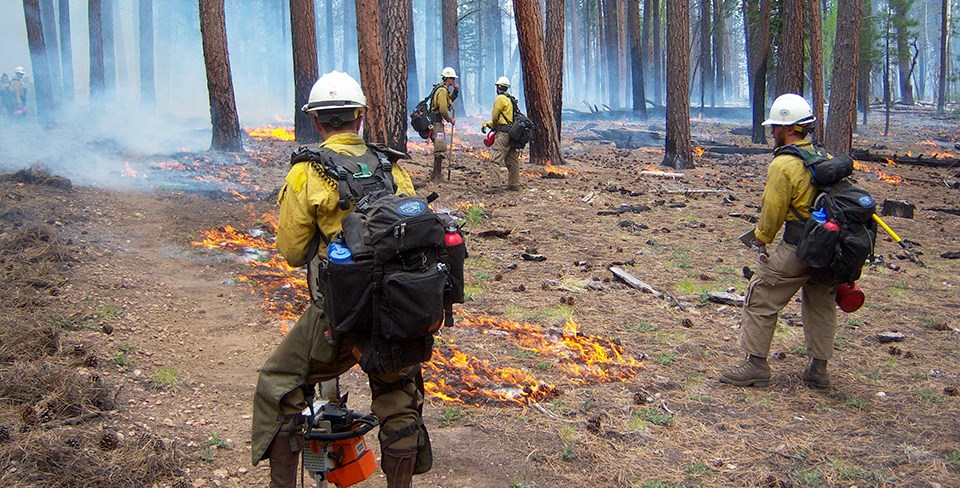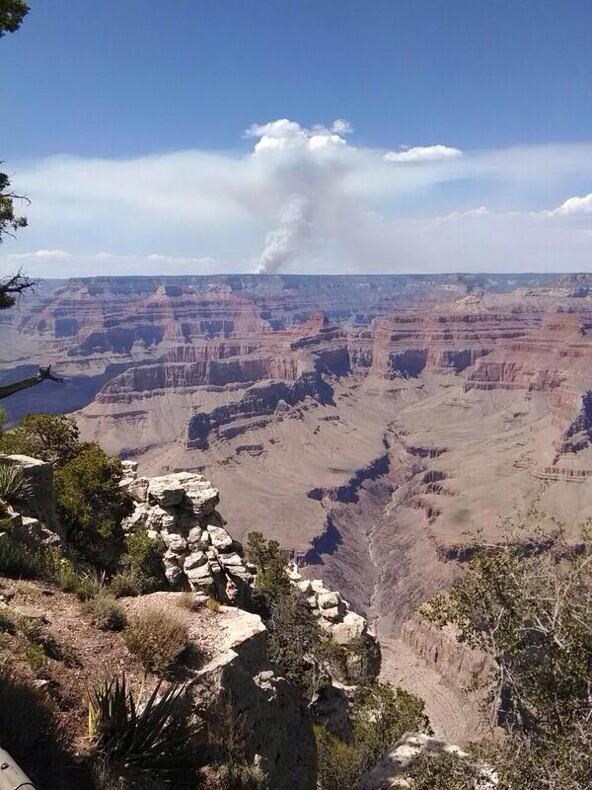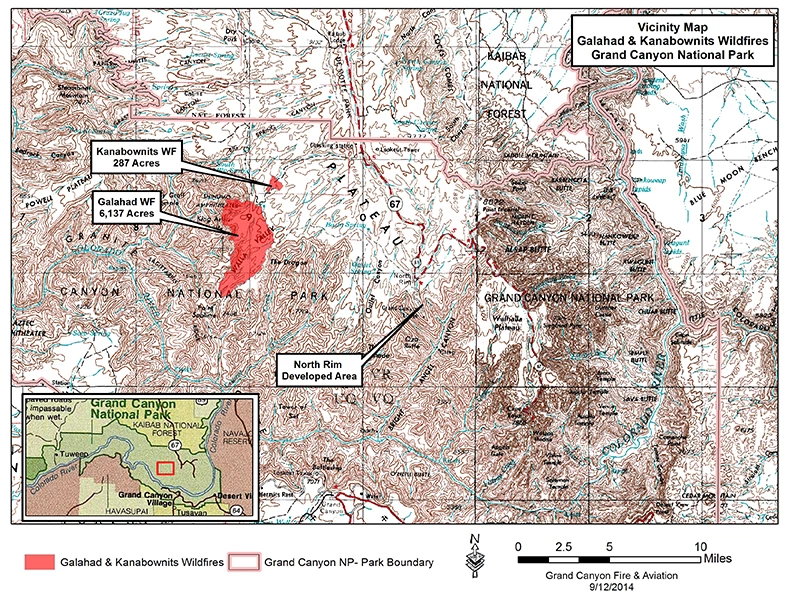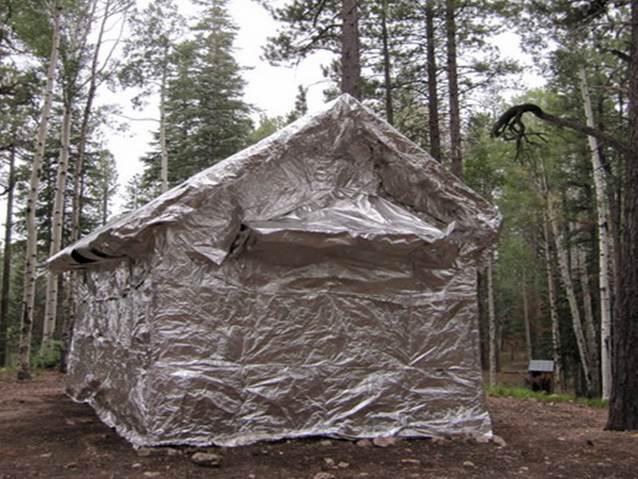Last updated: December 20, 2017
Article
Managing Wildfires in a Fire-Adapted Ecosystem in Grand Canyon National Park

NPS
Fire managers at Grand Canyon National Park successfully managed lightning-caused wildfires in summer 2014. Wildfire can be managed to achieve resource benefits and allow fire to return to a fire-adapted ecosystem with few impacts to the park or visitors. The policy of using fire as a management tool also helps decrease risks to life, property, and resources and perpetuates the values for which the park was established.

NPS
Managing Wildfires
Fire managers at Grand Canyon National Park were successful in managing a number of lightning-caused wildfires during the summer of 2014. The largest of these, the 6,137-acre Galahad fire, was discovered on May 23 on the North Rim of the park, approximately one mile southwest of the historic Kanabownits Cabin on the Walla Valley Peninsula.
The fire’s remote location and the fact that it was not posing any direct threats to infrastructure or park resources made it a perfect candidate to manage for both resource and protection objectives. Resource objectives for the fire included returning fire to a fire-adapted ecosystem to maintain forest health and the protection of sensitive cultural resources and wildlife habitat.

NPS

NPS
Fire as a Management Tool
To help contain the fire to the Walla Valley Peninsula, firefighters completed a handline followed by hand ignitions to keep the fire south and west of the W4 Road. Firefighters also initiated structure protection at the historic Kanabownits Cabin in advance of the fire’s potential spread by wrapping the cabin with a fire-resistant aluminum material. They then completed a burnout around the cabin to help protect it. Helicopters were also used to drop water along the fire’s northern flank to reduce activity below the canyon rim.
The remaining portion of the fire was naturally contained by the canyon rim and previous fire areas where there is little fuel left to burn. Fire managers felt confident that the fire in this area would gradually burn itself out, but it was monitored daily from the ground and air to ensure there was no threat of it crossing the W-4 Road.
After many weeks of managing the Galahad fire, it was declared out on July 15, 2014 after receiving significant precipitation. Fire managers were pleased with the fire’s effects, including low to moderate fire behavior, with flame lengths of 6-12 inches that met both protection and resource objectives.
Due to its remote location, smoke from the fire caused very few issues for firefighters and the public. In fact, there were many days when the smoke was so minimal that visitors didn’t realize that a fire was burning in the park. Some smoke settled into low areas around the North Rim during the late evening and early morning hours, but quickly dissipated by midmorning. An active public information program on both the north and south canyon rims was established early on in the fire’s history to ensure that park visitors were aware of the fire and any issues it may cause. This program also allowed the information officers and other park staff an opportunity to educate park visitors about the benefits of fire to the Grand Canyon ecosystem. Lightning on the North Rim ignited several small fires again on July 8. The largest of these was the Kanabownits fire, which was burning one mile northeast of the Kanabownits Cabin on the Walla Valley Peninsula – just a short distance from where the Galahad fire burned. Also a great candidate for a managed fire, the Kanabownits fire experienced minimal growth until hot, dry weather returned, causing fire behavior to increase two weeks later. The fire, which burned in the 2003 Poplar fire burn area, spread through needle cast, logs, and standing snags, as well as some Ponderosa pine forest. It grew to 287 acres before being declared out on September 3. Both the Galahad and Kanabownits fires are great examples of how wildfire can be successfully and safely managed to achieve resource benefits and allow fire to return to a fire-adapted ecosystem with few impacts to the park or its many visitors. The policy of using fire as a management tool also helps decrease risks to life, property, and resources and perpetuates the values for which the park was established.